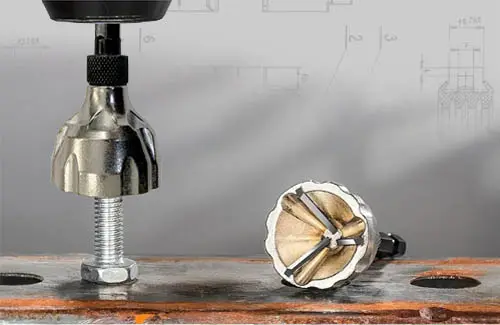The regular price is the current manufacturer's recommended price! FREE shipping for orders over EUR 41,67 within CZ+SK (PPLparcel)

In many projects, threaded rod, also commonly called full-threaded rod, is used to suspend and stabilize structures or objects. The biggest problem is that you can often only find it in certain lengths, which may not be suitable for your project. This means that you will have to shorten, deburr and chamfer the full-threaded stud to the required size.
Shortening a threaded rod to the required size, e.g. with a hand saw, angle grinder, circular saw or special threaded rod cutters, is relatively simple, but it can leave an unpleasant burr on the end of the stud, making it difficult to tighten the nut.
Deburring tool
A threaded rod deburrer is used to create a chamfer on the head of a threaded rod, bolt or screw to make it easier to screw them in. It is used for shafts with diameters of 3.00 to 20.00 mm.
Chamfering is the process of removing the end of a thread and cutting it at an angle. Chamfering is done to clean up the start of the thread so that nuts can be easily attached to the rod.
A threaded rod deburrer is a conical tool that attaches to a drill and quickly chamfers the edges of a fastener.
Uses
Can be used on stainless steel, hardened steel, mild steel, copper, brass, wood, fiberglass, and hard plastic.
Safety at work
A grinder or saw generates heat that can make the threaded rod hot to the touch, so wear gloves.
Other methods
In addition to a drill deburrer, other methods can of course be used for deburring:
1. File
- Use a fine file (ideally triangular or round).
- Carefully grind the outer edge of the thread with it until it is smooth and slightly beveled.
2. Grinder or angle grinder
- Use a grinding wheel to slightly chamfer the edge of the thread.
- Be careful not to damage the thread itself - just a slight "chamfer" of the edge is enough.
3. Hand deburrer
- A special tool with blades that is placed on the end of a rod and rotates - removing burrs in the process.
4. Tap or thread mill
- If you have the right tap (e.g. M10 for an M10 thread), you can lightly rotate it over the damaged end, which will straighten the thread and clean it at the same time.
We selected more articles for you: